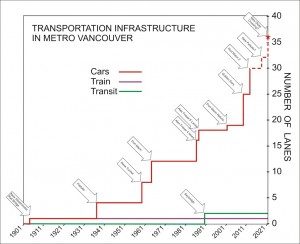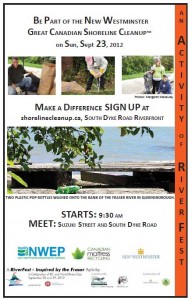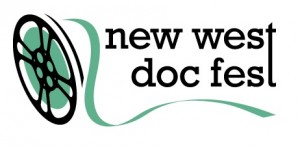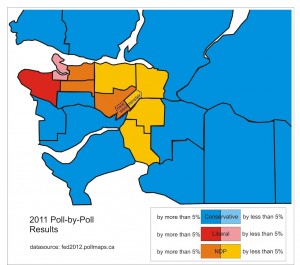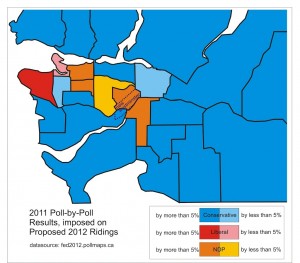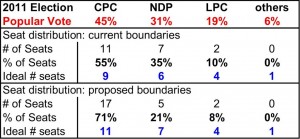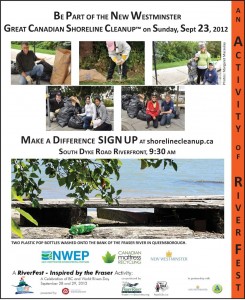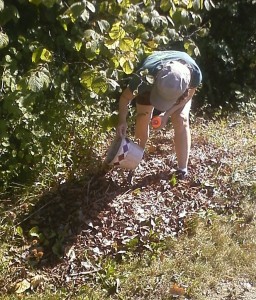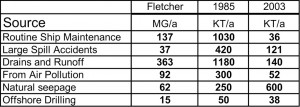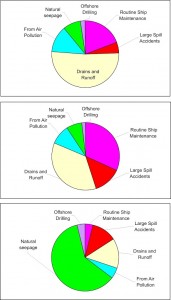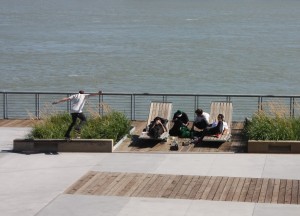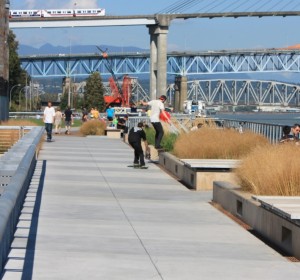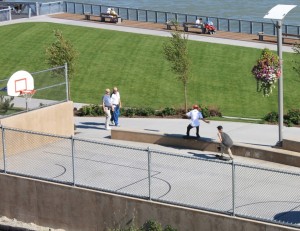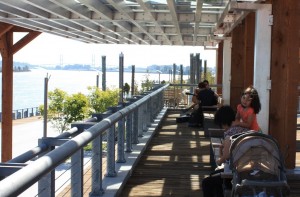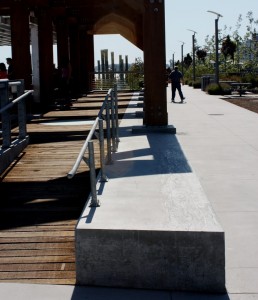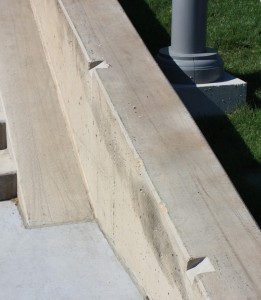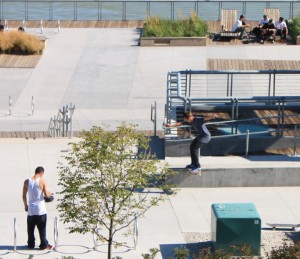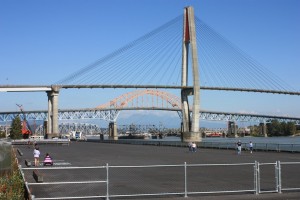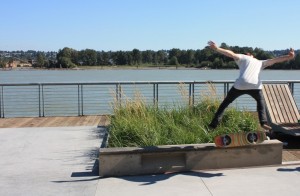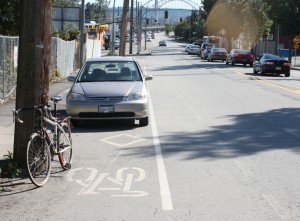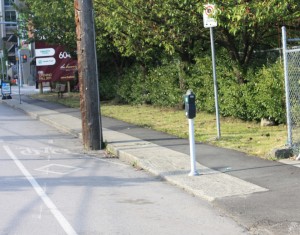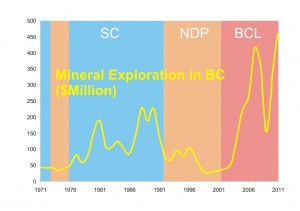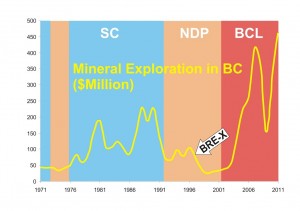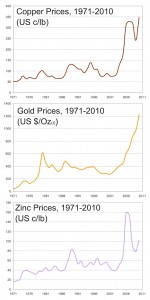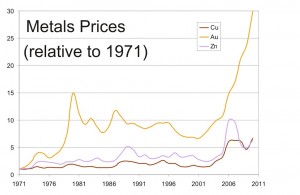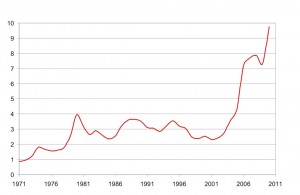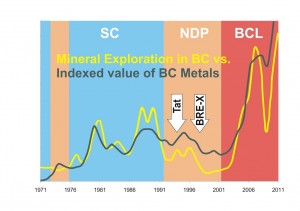There was a meeting last week of the Province’s Cities: the Union of BC Municipalities annual conference. People who run cities get together to talk about innovations, ideas, problems, and solutions. Pretty much like any other “convention”, except that there is another aspect to the meeting. Cities also have the opportunity to communicate with the Provincial Government. This happens through closed-door meetings where Civic politicos or staff meet with Provincial Ministers and their staff to hash out issues of an intergovernmental nature; where the UBCM passes “resolutions” of their members to ask the Provincial Government to take action on some topic; and in the Provincial Government presenting speeches to the collected City folk, to tell them what great things the Province has in store for Municipalities.
This year, the Premier (whom I like to refer to as McSparklestm) gave the Keynote address, and as is typical, offered a number of baubles to Muni leaders to show that the Province cares about families cities.
For those of us living in the Metropola of Vancouva, there has been an awful lot of talk recently about the biggest challenge the region is facing: how to move people about. As the Biggest Bestest Bridge Ever is getting rolled out, our regional Transportation Authority is bleeding from the eyes. Such is the ongoing funding crisis at TransLink that they are cutting rationalizing bus service, hiring security guards to intimidate people away from overloaded night buses, scrapping plans to invest in expanded service, cutting their bike program, and will not even be able to drive buses over that shiny new bridge…
So I waited in a cat-like state of readiness anticipating that Premier was going to show a little leadership and give the Province’s biggest Cities the relief they have been waiting for – a new funding model for TransLink, a new Governance model for Translink, a new idea of some kind in regards to TransLink. Anything. Just deal with it.
However, the word “Transit” did not appear once in her Keynote Speech to the Province’s Municipal Leaders, just as the word Leadership rarely crosses her mind. Instead, she doubled-down on building up last century’s transportation infrastructure. She doubled-down on Bridges and Roads. She doubled-down on dumb.
How bad? Almost a billion dollars in road infrastructure spending, not including the $2 Billion or more that any eventual Deas/Massey Tunnel will cost. Not a penny for TransLink or transit anywhere in the Province. I’ve said this before, and I‘ll say it again: Dumb.
The Premier announced they are going to start planning for a replacement of the Deas/Massey Tunnel, hoping to have it completed “in 10 years”. She has no plan, doesn’t know what to build, doesn’t know what it will cost, doesn’t know if it will be tolled, doesn’t know anything- but she announced that it is time to start the conversation (recognizing she won’t be arond long to complete the conversation). She want to start the planning.
Here, I’ll save her some time. You are not twinning or expanding the tunnel. It may seem cheap and easy to toss a third tube down adjacent to existing ones, but it would be anything but. The infrastructure used to make and install the tunnel is long gone (the basin built for the purpose now a BC Ferries works dock just west of the tunnel), and the design from 1958 would surely not pass 2012 seismic standards, and dropping a third tube without disturbing the existing ones or the armor rock on them would be difficult.
Further, the tunnel is currently a limiting factor on ships traversing the Fraser River. Ocean-going cargo ships are restricted in draft on the River now by the clearance at the tunnel. The Panamax Tankers envisioned for the Vancouver Airport Fuel Delivery Project could not reach their terminal unless they are less than 80% laden, and even then only at high tide. If the Federal Government are going to agree to any Deas Island crossing (and they will have to as per the Navigable Waters Protection Act), they will no doubt insist on a bridge to open up PortMetroVancouver to more flexible freight movement on the River. Any “upgrade” here will involve the removal of the Deas/Massey Tunnel, full stop.
There is also no chance of a bored tunnel (as the Canada Line takes under False Creek) working in this location. The geology there is loose river sediment at least 500m down – making it like tunnelling through jello: a geotechnical nightmare.
So it will be a bridge. If near the same location as the tunnel (as would be required to fit Highway 99, we are looking at a 800-m long main span, similar to the Pattullo Bridge, but built on technically challenging foundations due to the loose sediment. Any other location (to the east, as there is no way Richmond will be ploughing neighbourhoods to allow the bridge to move west) will mean a longer span and lesser connection to Highway 99.
But how big? The new bridge will need to be larger than the current 4 lanes to meet Premier McSparklestm 1950’s mindset that the “congestion problem” in Delta can be solved with new highway lanes. As the counter-flow system currently has three lanes with Rush Hour flow, a 6-lane bridge will also likely not be up to the task…. will 8 be enough?
For the sake of argument, let’s say the Deas/Massey Tunnel is replaced with a 8-lane bridge, just slightly ahead of the Premier’s 2022 deadline, to align with the Province’s and MetroVancouver’s growth predictions for 2021. Also presume that the current funding stranglehold doesn’t scupper TransLink’s planned 6-lane Pattullo replacement, the exponential growth of traffic lanes across the River is pretty clear:
Just between 2000 and 2021, the number of road lanes crossing the Fraser River within MetroVancouver would double from 18 to 36 with not a single increase in rail or transit capacity crossing the river in the same time.
The real economic choke point in the crossing of the Fraser is the 100-year old New Westminster Rail Bridge, with its single rail line being that flat purple line on the graph. TransLink forecasts big increases in Transit ridership across the River (well, it used to, it is unsure how the current funding crunch will impact these projections), but is currently operating the only two lanes of rapid transit (Skybridge is green line) at near capacity, will not have the money to even put buses on the World’s Widest Bridge, which will have 10 lanes, but not one of them dedicated to transit. Dumb.
This is the real story behind the TransLink “Funding Crisis”. $5Billion spent on roads and bridges in the last decade, and Billions more to come. All this while car use is declining, and our existing transit system is hopelessly overcrowded. The last comprehensive study of Traffic at the Deas/Massey Tunnel demonstrated that traffic through the Tube declined more than 7% over the 5 years, while people taking transit over the same time went up over 8% in the same period. This is not about capacity issues- this is about entrenching the building of car-oriented neighbourhoods in Langley, Surrey and Delta. This is threatening our livable region strategy, it will continue to threaten ALR land and our airshed. We cannot possibly hope to reduce our Greenhouse Gas emissions, to become food or energy independent.
The worst part of the Surrey Leader story? The Vice-Chair of TransLink (who happens to be Mayor of the City with the greatest proportion of car users in the region) calling it “a great announcement”, while the only quote from the NDP opposition seems to be critical that the tunnel can’t be replaced sooner. There is plenty of dumb to go around here.
